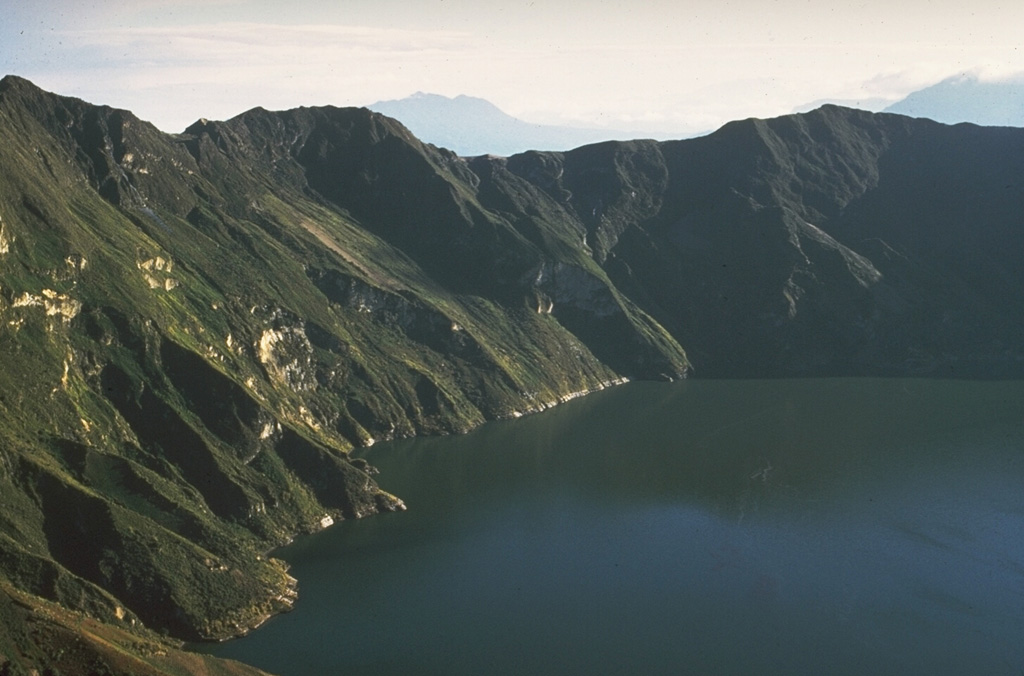Global Volcanism Program | Image GVP-04476

Quilotoa is a truncated, forested dacitic cone containing a steep-walled, 3-km-wide caldera filled by a 250-m-deep lake. Lava domes form the caldera's perimeter and occupy its floor. Its most recent large eruption about 800 years ago produced voluminous pyroclastic flows, lahars that reached the Pacific Ocean, and one of the largest airfall-tephra deposits of the northern Andes. Reports of historical eruptions from the caldera lake are somewhat ambiguous. Fumaroles are present on the lake floor and hot springs occur on the eastern flank.
Photo by Minard Hall, 1973 (Escuela Politécnica Nacional, Quito).
![]() This image is made available under the Creative Commons BY-NC 4.0 license terms.
This image is made available under the Creative Commons BY-NC 4.0 license terms.

Quilotoa
